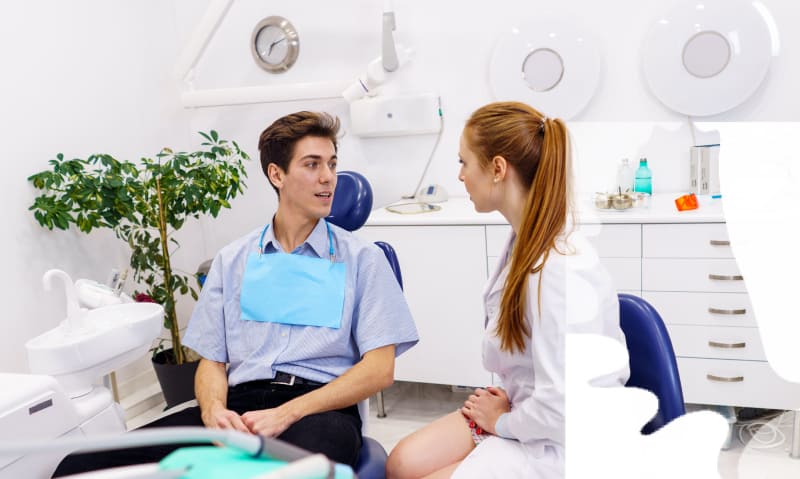Can Botox Effectively Treat TMD and Chronic Migraines?

Treat your TMD and chronic migraines with the help of Botox.
You’ve likely heard of Botox treatments to help smooth away fine lines and wrinkles on the face. Yes, Botox can indeed be used for cosmetic purposes, but did you know it can also effectively treat migraines, jaw pain, temporomandibular joint disorder (TMD), and bruxism. Read on to learn more about how Botox can help you with your TMD or chronic migraine pain.
What is Botox?
Botox is a medication derived from a toxin created by the bacterium Clostridium botulinum. And if that bacterium sounds a bit familiar, it’s because it is the very same toxin that causes the life-threatening type of food poisoning called botulism. But when used correctly by skilled licensed medical practitioners and dentists, Botox can be used to treat various health problems. Aside from its use for cosmetic purposes, Botox can help with the following:
- Excessive sweating
- Chronic migraines
- Cervical dystonia, a neurological disorder that causes severe neck and shoulder muscle contractions
- Uncontrollable blinking (blepharospasm)
- Misaligned eyes (strabismus)
- Overactive bladder
- TMD
Botox can treat TMD and chronic migraines.
Many patients have believed that it’s too good to be true, but if you are experiencing chronic jaw pain or headaches, you deserve to experience relief. Headaches can easily disrupt your day, whether at work or home. When chronic headaches are left untreated, the pain can become more intense over time. The pain and discomfort can move from one side of your head to the other. And it may not only affect the front of your head, but the back of your head too. Similarly, untreated jaw pain can contribute to significant discomfort and tension. Many patients with untreated TMD and chronic pain have reported that they’ve developed mental illnesses, such as anxiety and depression, as a result of the incessant discomfort.
An increasingly popular treatment option for TMD and headaches is Botox. When Botox is injected into your sore or uncomfortable facial muscles, it can help relieve that tension. It also aids in eliminating headaches that could result from bruxism (teeth grinding). It can even minimize lockjaw from severe and extreme cases of stress. Further, Botox injections are quite effective in lessening if not alleviating pain associated with TMD and headaches.
Treatments are fast and simple, with no overnight stay required.
How long do Botox treatments for TMD and chronic migraines last?
If you suffer from TMD or chronic migraines, you likely want a treatment that will last. The last thing you want to do is head back to the doctor or dentist every other week for more injections. The great news is Botox treatment can last three to four months before a repeat treatment is required. For some patients, the treatment can last even longer.
To ensure the best outcome after a Botox treatment for TMD or bad headaches, follow this advice:
- Refrain from rubbing or massaging the areas where the Botox was injected
- Sit upright for the rest of the day or at least the next few hours to keep the Botox focused on the treatment area. If you lay down too soon after treatment, it can travel into other areas around the injection site, reducing the effectiveness in the targeted area.
- Use an ice pack or cold compress if you feel any stinging, pain, or other discomfort around the injection area. Know that this is common after treatment, and the discomfort will soon dissipate.
Am I a candidate for Botox?
Though a consultation will be required to discuss your particular needs for Botox treatment, most physicians and cosmetic dentists will define a Botox candidate as someone 18 years of age or older, in good physical health, and who is not pregnant or nursing. During the consultation, the medical professional will also ensure you have moderately realistic expectations regarding the results of the Botox treatment, including what you may or may not achieve. In some instances, an allergy test may be recommended, especially if you have a history of sensitive skin.
If you visit one of our dentists at Valley Dental Clinic in Wasilla, Alaska, we’ll help you understand your migraines and TMD and will partner with you to determine if Botox is the best migraine and TMD treatment for you. Dr. Robert Robinson, Dr. Millie Lyerly, and the dental team at Valley Dental Clinic are professionals and want to ensure your Botox experience is not only pleasant but effective.
Request a Botox consultation at Valley Dental Clinic today.
If you are ready to put an end to your TMD and chronic migraines, now is the time to request an appointment at the best dentist in Wasilla, Alaska. We look forward to helping you get on a path toward optimal health.